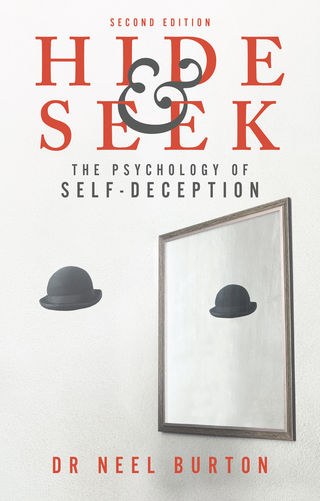Deception
Self-Deception Series: Repression and Denial
Man is not a rational, but a rationalizing animal.
Posted March 15, 2012
[Article updated on 6 September 2017]
In the immediate aftermath of the 9/11 attacks on the Twin Towers, an estimated 200 people jumped to their deaths to avoid being killed in the smoking fires. Some might have lost their footing, others may have been pushed out by an explosive force, but it remains likely that many chose to jump to escape from the suffocating smoke and dust, the blistering flames, and the steel-bending heat.
These so-called ‘jumpers' chose the manner of their death (in so far as they had a choice, given their horrific circumstances), and many people see that choice as a heroic act of defiance in the face of near certain death.
Some tried to make parachutes out of curtains or table cloths, only to have them ripped out of their hands as soon as they started falling. Depending on body position, the speed of their fall from a height of 110 storeys—that is, more than 1300ft—might have reached up to 200mph; upon hitting the ground, they stood absolutely no chance of surviving, with their bodies being not so much broken as obliterated.
Several years on, there has been little interest in uncovering the identities of these 200 or so jumpers; the official account remains that nobody jumped, and that all 2,753 victims in the Twin Towers died from ‘blunt impact' injuries.
On the first anniversary of the tragedy, a bronze sculpture by Eric Fischl, Tumbling Woman, was unveiled in Rockefeller Center. The sculpture depicted a naked woman with her arms and legs flailing above her head, and was accompanied by a short poem by the artist,
We watched,
disbelieving and helpless,
on that savage day.
People we love
began falling,
helpless and in disbelief.
The sculpture gave rise to so much protest that, within a matter of only days, it had to be draped in cloth and surrounded by a curtain and then finally removed.
Fischl released a statement defending his intent, "The sculpture was not meant to hurt anybody," he said. "It was a sincere expression of deepest sympathy of the vulnerability of the human condition. Both specifically towards the victims of September 11 and towards humanity in general."
In a subsequent interview with the poet Ilka Scobie, Fischl said, "the thing around 9/11 is that it was this horrific event that killed 3,000 people but there were no bodies. If you remember all the passion was centred on architecture to replace the Towers. To secure the footprints of the Tower. It had nothing to do with human tragedy because it was too painful. So I think that the Tumbling Woman reminded people that it was a human tragedy."
Repression can be thought of as ‘motivated forgetting': the active but unconscious ‘forgetting' of unacceptable drives, emotions, ideas, or memories.
Unsurprisingly, repression is often confused with denial: whereas denial relates to external stimuli, repression relates to internal, that is, mental, stimuli. Nonetheless, denial and repression often work together and may be difficult to disentangle from each other.
Freud thought of repression as the basic ego defence, since it is only when repression is fragile or failing that other ego defences come into play in a bid to reinforce and rescue it. Put differently, repression is an essential component or building block of the other ego defences.
Take, for example, distortion, another common ego defence: a person who has been beaten black and blue by his father no longer remembers these traumatic events (ego defence of repression, specifically, memory repression), and instead sees his father as a gentle and loving man (ego defence of distortion). In this case, there is a clear sense of the distortion not only building upon but also supporting and reinforcing the repression.
Although repressed material is unconscious, it is no less present and can (and usually does) resurface in strange and disturbing forms. The inability to process and come to terms with repressed material can lead to a lack of insight and understanding—as, for example, in the case of the person who thinks that his abusive father is a gentle and loving man. But it can also lead to a range of psychological problems such as difficulty concentrating, irritability, anxiety, insomnia, nightmares, and depression, and to maladaptive and destructive patterns of behaviour such as anger and aggression in the face of reminders (such as Tumbling Woman) of the repressed material.
More generally, repressed material can lead to the entire gamut of ego defences and associated behaviours that I discuss in my blog posts and in my book on the psychology of self-deception.
Neel Burton is author of The Meaning of Madness, The Art of Failure: The Anti Self-Help Guide, Hide and Seek: The Psychology of Self-Deception, and other books.
Find Neel on Twitter and Facebook

References
Ilka Scobie, Inside Man (Interview with Eric Fischl), artnet.com.




